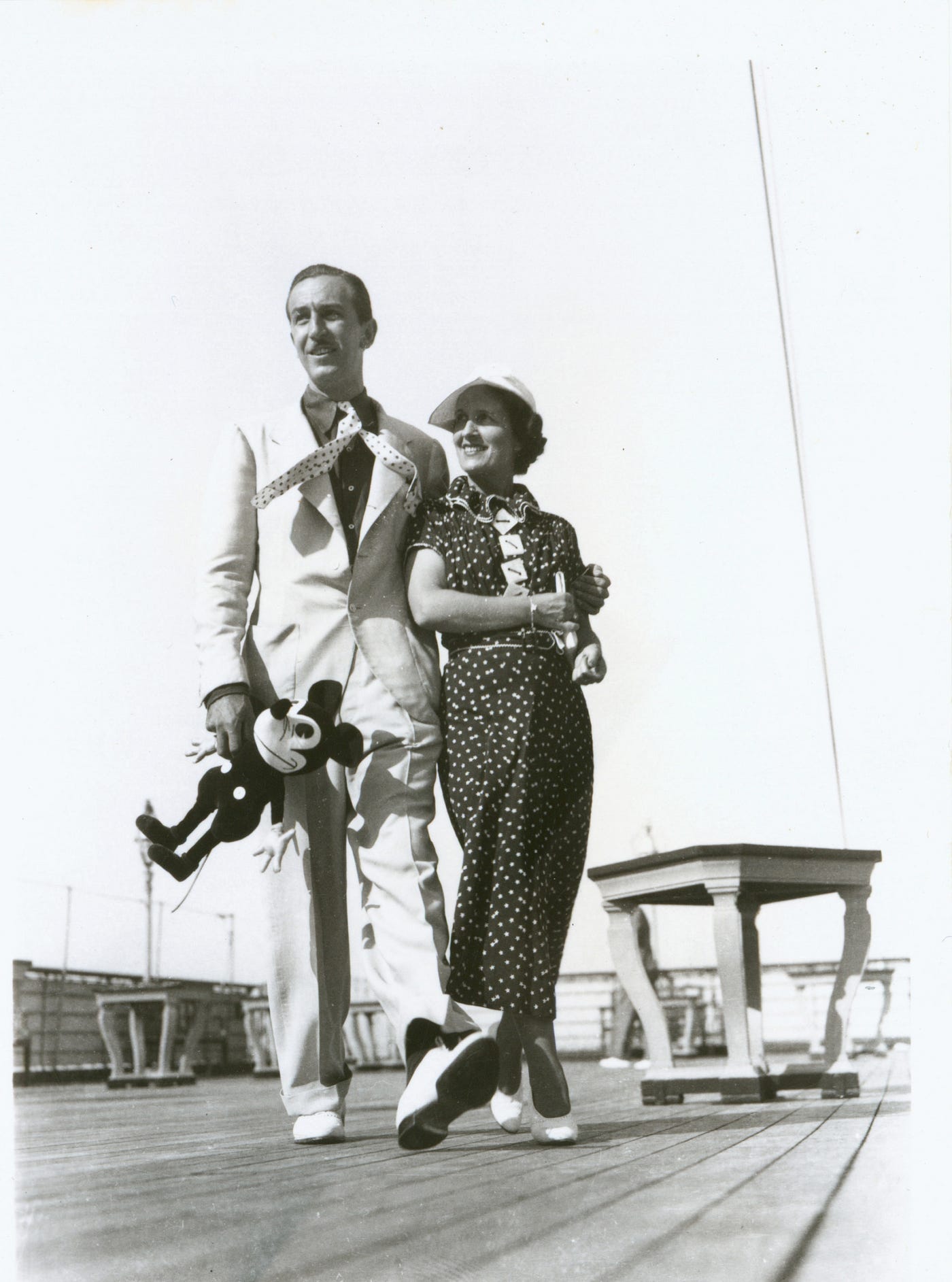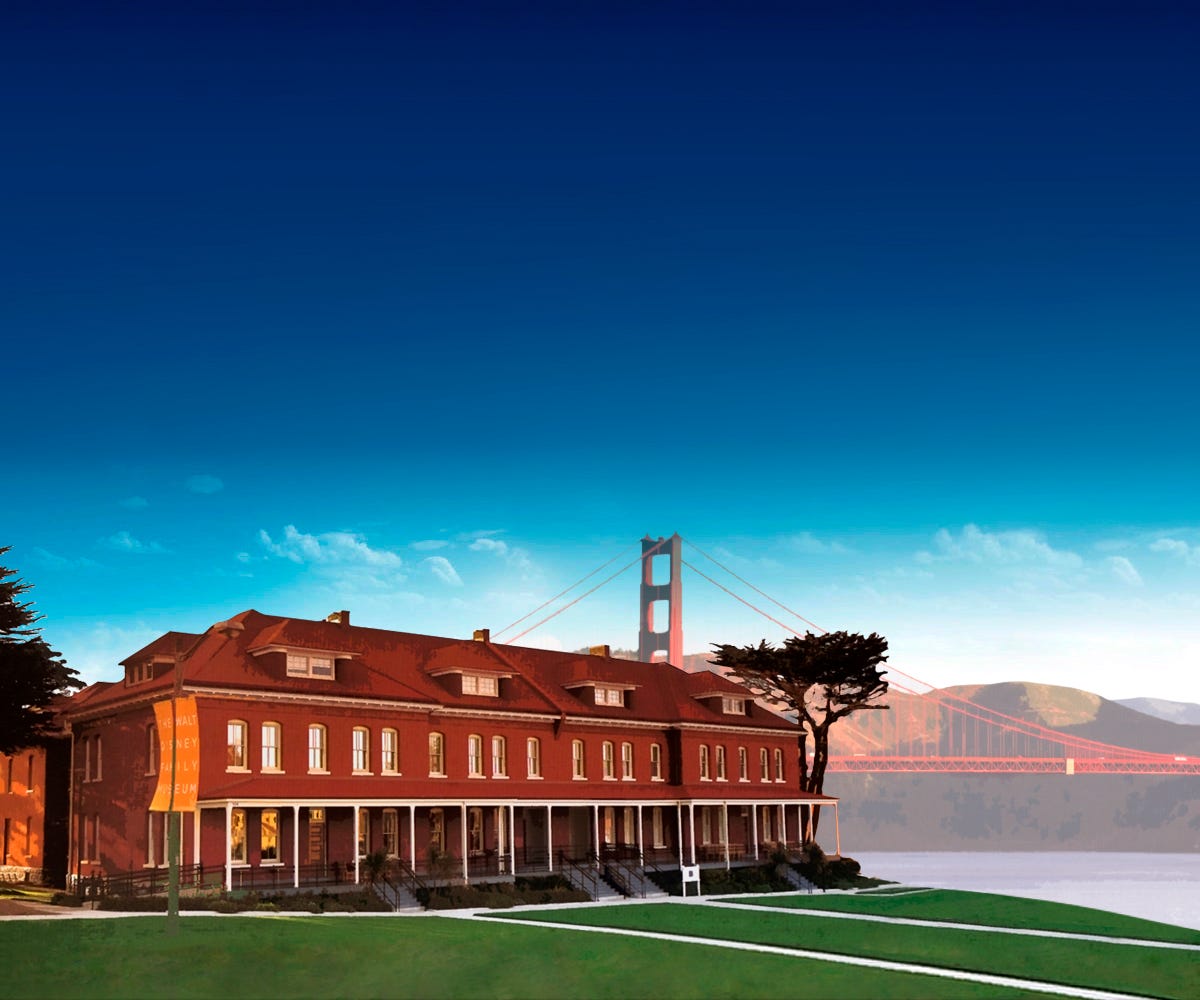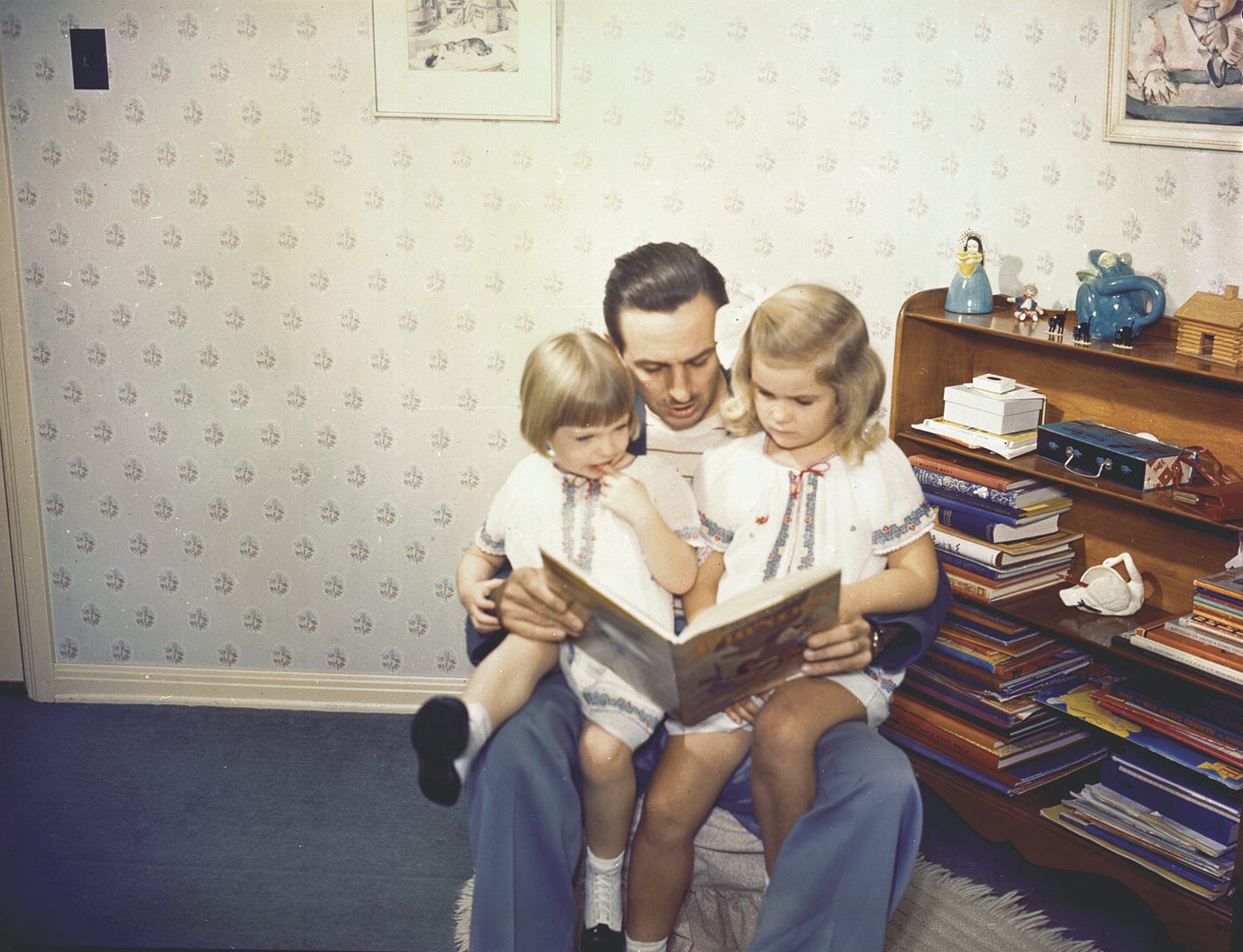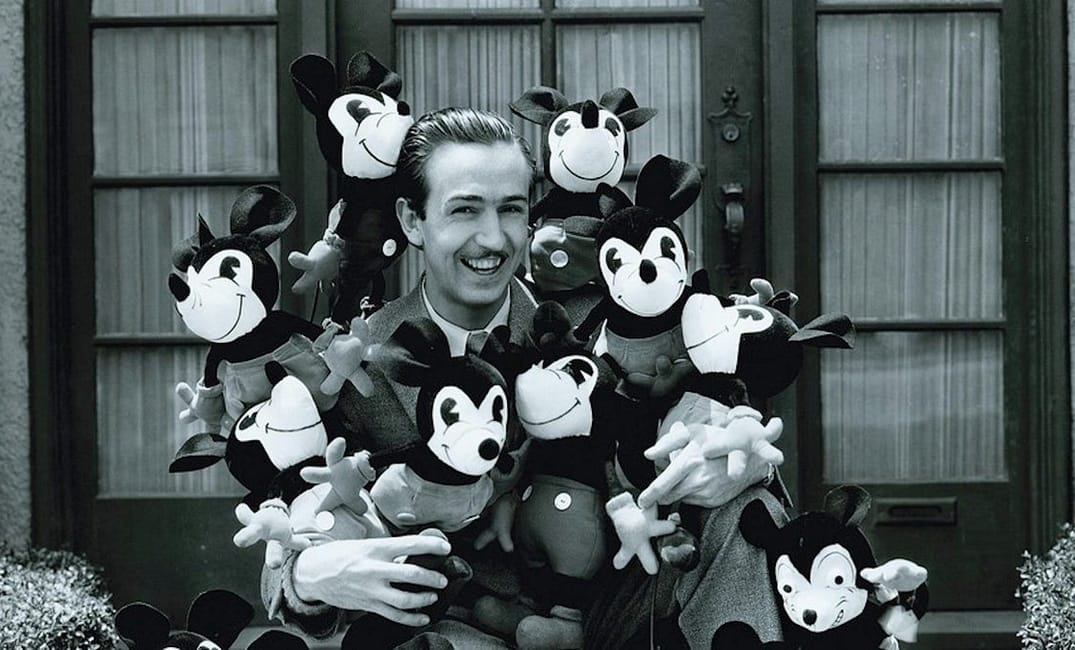
If you had to name a place associated with Walt Disney, you might think of Orlando, Florida, where Walt Disney World is. Or perhaps you would think of Southern California, where both the Walt Disney Company and Disneyland reside. You could even list any of the other international cities that are home to a Disney park, including Paris, Tokyo, Shanghai, and Hong Kong.
So when people find out there’s a museum dedicated to the life of Walt Disney in San Francisco, they usually ask, “Why?”
Born in Chicago, Walt Disney later moved to Marceline, Missouri, as a child. (He modeled most of Main Street U.S.A. in Disneyland after the town.) After creating a couple of failed animation businesses with his brother Roy in Kansas City, Missouri, they traveled to Hollywood and eventually built what is now the Walt Disney Company in Burbank.
So where’s the Bay Area connection? That lies mostly with his daughter, Diane Disney Miller.
The Bay Area connection
Both Diane Miller and her sister, Sharon Disney Lund, adored their famous father.

“She had a lot of the same qualities as him,” says Kirsten Komoroske, executive director of the Walt Disney Family Museum. “She was an incredible creative visionary and you can see that in the museum. Walking through, you feel like this museum is the book Diane never wrote about her dad. You get a real sense of both who he was and the love and reverence she had for him.”
Diane was very involved in maintaining her father’s legacy after his death in 1966, which included overseeing the completion of the Walt Disney Concert Hall in Los Angeles, and then the development of the Walt Disney Family Museum in San Francisco. Located in the San Francisco Presidio, the museum opened in 2009 and is a nonprofit with no legal affiliation with the Walt Disney Company.
“Diane was more interested in maintaining the memory of her father as a person, not just a brand,” Komoroske explains. “The family wanted to do the museum as a tribute to her father, so she undertook the expense of the whole project.” It cost the family an estimated $110 million to remodel the barracks building in which the museum is housed.
After Diane’s husband, Ron Miller, served as CEO of the Walt Disney Company from 1978 to 1983, the couple moved permanently to the Bay Area and purchased an apartment in San Francisco. They also used land in Napa Valley that Diane’s mother, Lillian Disney, had purchased years earlier to start their own winery, Silverado Vineyards, which still thrives today.
“When they relocated from the Los Angeles area, they moved their collection (of Disney memorabilia) to a warehouse in the Presidio, so they were familiar with this area,” says Komoroske. “They looked all over the country at sites that people would associate with Walt. But Diane really loved the Presidio and thought her father would’ve liked the history of it being a military base.” (Walt Disney joined the Red Cross as a teen and was sent to France during World War I.) “It’s absolutely gorgeous and pristine with the wonderful views. She also wanted to be close by while it was being built and designed. She was here on site with her hard hat on.”
Diane also understood the Bay Area was at the forefront of animation.
“Dreamworks started here, Pixar of course, and Industrial Light and Magic are all in the Bay Area,” says Caroline Quinn, the museum’s senior communications coordinator. “Diane understood that San Francisco had a very significant place in animation.”
And the proximity to Silicon Valley didn’t hurt.
“Walt was also into technology, and San Francisco is such a technology hub,” Komoroske adds.
The museum’s purpose
Some people don’t quite know what to expect from a Disney-branded museum. Will there be rides? Is it more fun than factual? But Diane’s intention was clear from the start. She wanted the museum to be educational but still fun. She said, “People often don’t realize that there was a man behind the brand. My dad was a person with a lot of drive, huge curiosity, great love of life and people, and everything that makes you human also is what made him human.”

The museum tells the story of Walt Disney’s life from beginning to end. There are also plenty of interactive elements, including a talking tiki bird animatronic you can control, stations where you can see how Walt Disney first combined music with animation, and an incredibly detailed miniaturized model of Disneyland that cost $1 million to create. The last few rooms are particularly moving, with actual media accounts of the day he died. “Disney has become such a brand that people don’t even realize Walt Disney was a man…He had so many different facets. He was so incredibly creative and he was a visionary,” says Komoroske.
Diane was also keen on highlighting her father’s failures as much as his successes. For example, there is a wall in the museum that tells the story of Oswald the Lucky Rabbit, a financially successful and popular character Walt Disney created in 1927. But just one year later, he lost the rights to Oswald and his distributor lured away many of the Walt Disney Studio’s animators. It was only after that devastating loss that Walt was determined to create a new and more successful animated character. That’s how Mickey Mouse was born. (In 2006, Bob Iger, current Walt Disney Company CEO, got the rights to Oswald back from Universal Pictures.)
“She tells the true story of her father throughout the museum and doesn’t pull any punches,” Komoroske says. “She wanted people to know that yes, he created magic, but it was through hard work and perseverance.”

Though Diane Miller passed away in 2013, the museum is still very much a family affair. Three of Miller’s seven children are on the board of directors, and so are some of Walt Disney’s great-grandchildren.
Building this tribute to her father in San Francisco, Diane Miller said, “It was a natural fit. My dad was kind of everywhere…and he’s known all over the world, but California was his home and we’d never think of living anyplace else.”







